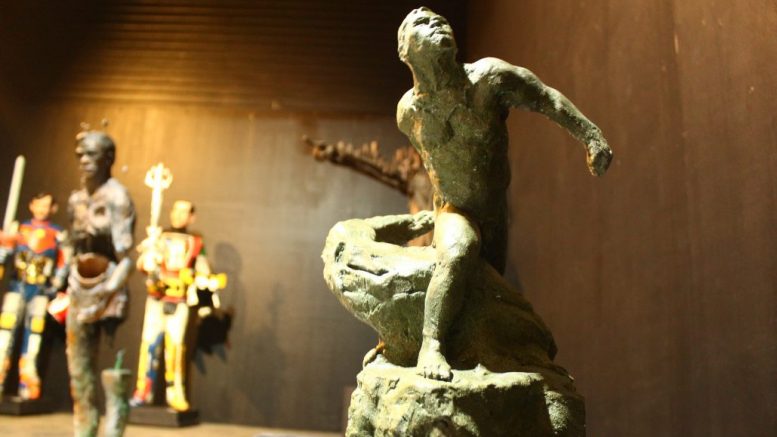by Carlos Maningat
How would anti-colonial revolt against Spaniards and the anti-Marcos middle class movement jive when portrayed in a single sculptural form? How about the oppressed class taking the form of classical sculptures reminiscent of the Greek temples?
At the March 2017 “Reconfigurations” exhibit by the University of the Philippines College of Fine Arts (UP CFA), four faculty members explored the reinterpretation of figurative sculpture to bring elements of the past and present, classic and contemporary into tangible portrayals of the human form. The results are stimulating, inviting exhibit-goers to reflect on notions of the body and the socio-political context attached to it.
For instance, the works of Toym Imao assemble notable cultural and historical icons across time into intriguing sculptural pieces. The tall fiberglass figures of Philippine revolution heroes Andres Bonifacio and Jose Rizal donned in Voltes V and Voltron armor stand as reconfigured depiction of resistance. Voltes V, a known icon of rebellion against an intergalactic empire, was banned from airtime during Martial Law when television ownership is confined to privileged families. It has since become a symbol of middle class protest against the Marcos dictatorship.
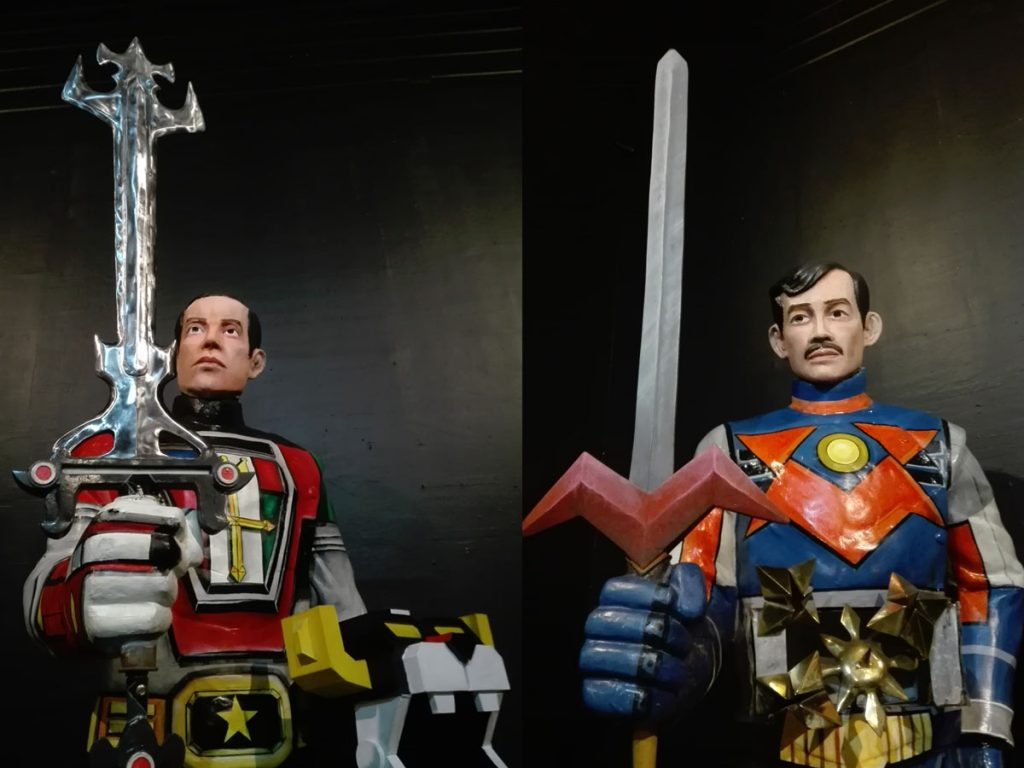
RECONFIGURATIONS. The works of Toym Imao assemble notable cultural and historical icons across time into intriguing sculptural pieces. Photo by Carlos Maningat.
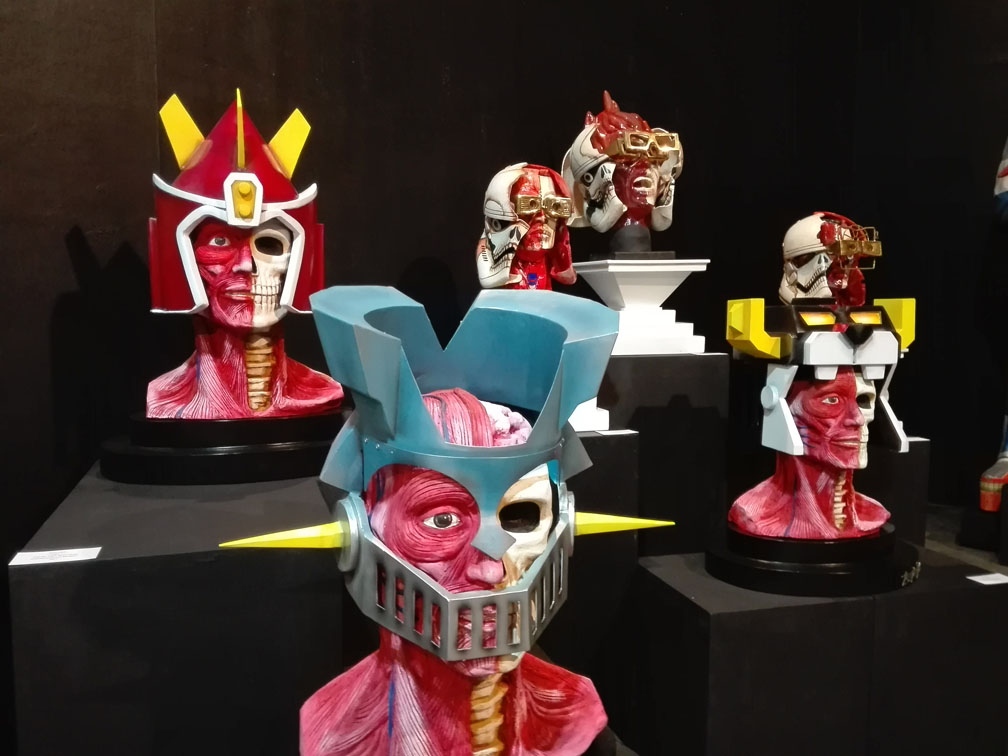
RECONFIGURATIONS: The other pieces were busts in the human flesh wearing Voltes V, Voltron and Star Wars’ famous stormtroopers’ ripped headgear, with rebellion as common theme. Photo by Carlos Maningat.
Paul Quiaño, meanwhile, revisited classical models and recast them into unconventional portrayals. Quiaño translated Da Vinci’s sketch of the Vitruvian man into a metallic three-dimensional form, and featured Filipino women in negative plaster of paris molds. Interestingly, he made his sculpture aide a portrait bust with visibly sunken cheeks. Busts have been traditionally reserved for emperors and those in power and prominence, and with Quiaño’s work, he is challenging notions of privilege and bringing to the fore hidden labor behind artworks.
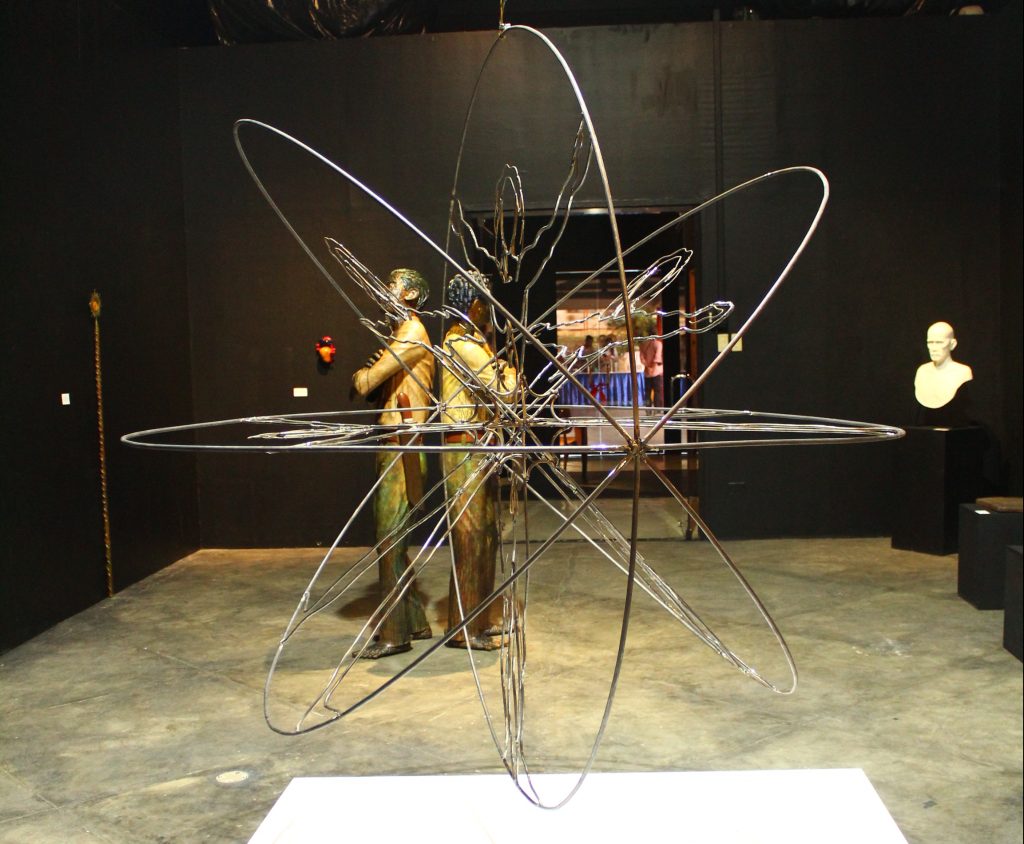
RECONFIGURATIONS: Paul Quiaño translated Da Vinci’s sketch of the Vitruvian man into a metallic three-dimensional form.

RECONFIGURATIONS: Paul Quiaño, revisited classical models and recast them into unconventional portrayals. Photo by Carlos Maningat.
For social realist Manolo Sicat, the landlord class is portrayed as an unflattering, dominating heap of welded, rusty metal scraps gesturing occupation of infinite expanse of lands. In another sculptural piece, Sicat came up with a powerful representation of exploitation of the masses with sunken, empty stomach, rosary plugged to the ear (signifying lingering Christian indoctrination in a semi-feudal setting), yet with sprouts growing on the head as symbol of hope.
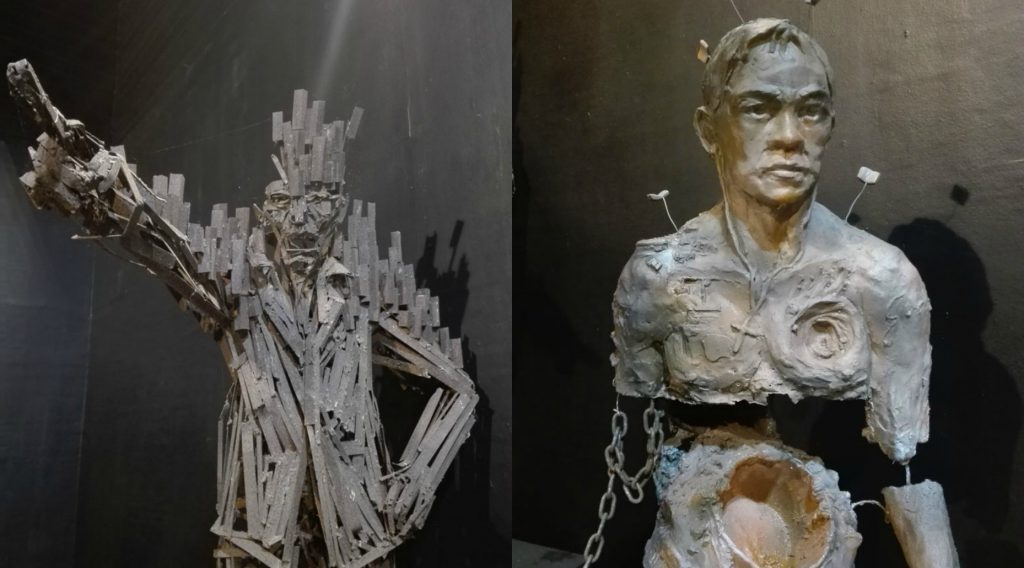
RECONFIGURATIONS: Manolo Sicat portrayed the landlord class as an unflattering, dominating heap of welded, rusty metal scraps. In another sculptural piece, Sicat came up with a powerful representation of exploitation of the masses. Photos by Carlos Maningat.
Sicat’s two smaller cold cast marble pieces fused classical Greek styles in sculpture with fresh representations of liberation. “Balikwas” visualizes a Filipino forcefully swinging his arm, while “Hubad na Katotohan” is a recast of the classical nude in a post-truth era. The fifth piece is a jarring visualization of workers trapped in factory fire, reminding us of the Kentex fire in 2015 and the more recent HTI ecozone fire in Cavite last February 1, 2017.
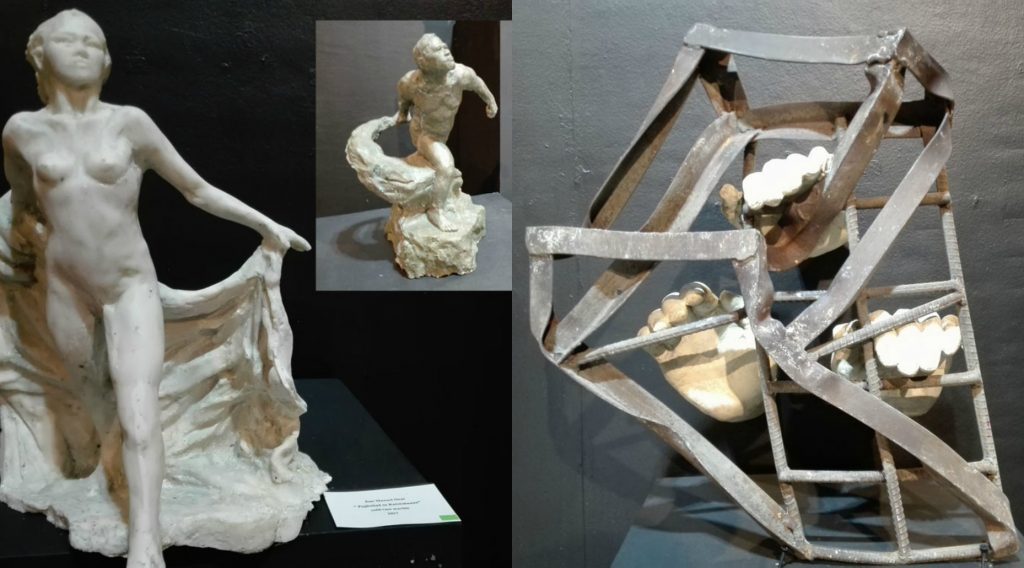
RECONFIGURATIONS: Manolo Sicat featured a recast of the classical nude in a post-truth era. The fifth piece is a jarring visualization of workers trapped in factory fire. Photos by Carlos Maningat.
Lastly, Bob Feleo did the unconventional by rigorously assembling saw dusts into tangible material forms. His twin life-size figures “Magdalo at Magdiwang, Norte at Sur, Pula at Dilaw” calls for a reimagination of the dialectical tension between dualities. This tension and duality have been present in the actual experience of the anti-colonial revolt and the leftist resistance up to now, something that should remind us to not to take the wrong side of history.
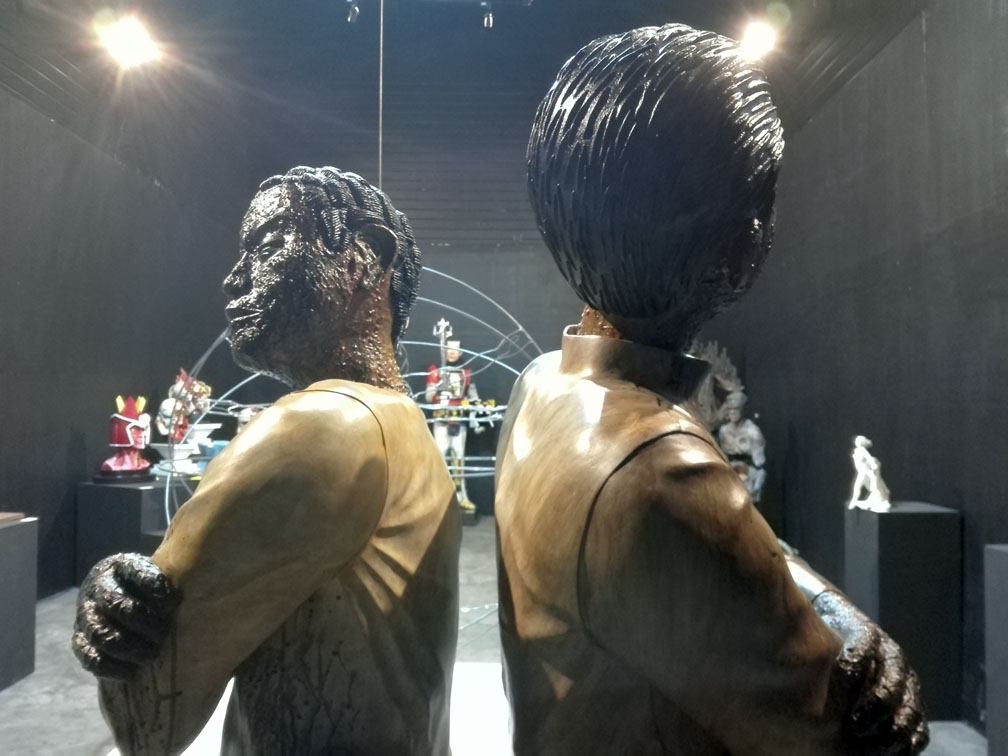
RECONFIGURATIONS: Bob Feleo did the unconventional by rigorously assembling saw dusts into tangible material forms. Photo by Carlos Maningat.
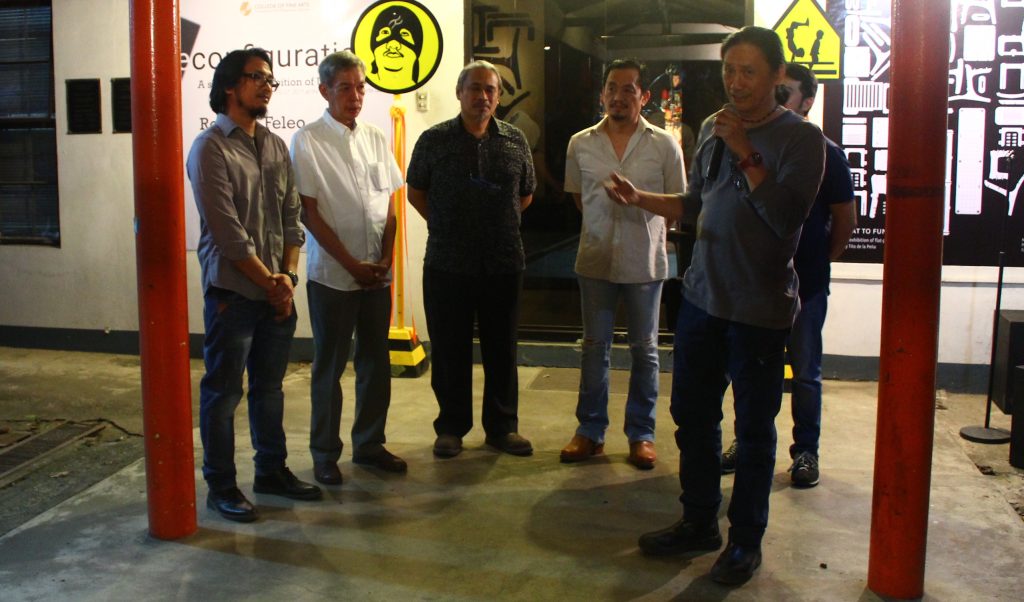
RECONFIGURATIONS: Left to right are sculptors Manolo Sicat, Bob Feleo, Toym Imao, and Paul Quiaño with College of Fine Arts Dean Leonardo Rosete. For inquiries on the artists and sculptures, please contact the UP Fine Arts Gallery at upcfinearts@gmail.com and 920.9910 (telefax).

